EPAEB EXAMINATIONS - BHARATANATYAM

GENERAL INFORMATION
There are 10 grade level examinations available to the applicants.
Pre-primary grade examination is available for very young children aged 5 to 8 years.
All grade level examinations consist of theory and practical assessments.
A PowerPoint or similar presentation of course work including any additional research material will be part of grade evaluation.
Diploma qualification will be awarded for candidates after completing Grade 8
Grade 9 and Grade 10 are advanced level grades and Post Diploma qualification will be awarded to candidates on completion.
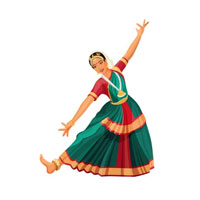
PRE-PRIMARY GRADE EXAMINATION
Pre-primary grade examination primarily intended for younger children aged 5 to 8 years.
This grade examination will assess the basic fundamentals of Bharatanatyam including “Adavus” (basic steps) where it is emphasised on the movement exploration and enjoyment of dance without giving too much in depth techniques.
Also, the grade covers the basic understanding of “Mudras” (hand gestures) and “Slokas” (small songs) to start introducing communication of feelings and emotions through expressions.
Please see the syllabus for more details.
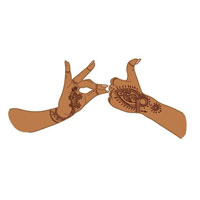
GRADED EXAMINATIONS – GRADE 1
Grade 1 examination covers basic steps (“Adavus”) and its vocabulary (“Solkattu”) with emphasis on rhythm (“thala”).
The candidate will be assessed on steps, vocabulary, rhythm and the techniques used to perform these actions. This also includes the syllabus of the previous grade.
The candidate is expected to be familiar with introduction to basic postures, tapping the feet steps, using heels, short jumping movements, moving side to side steps and dragging steps.
Please see the syllabus for more details.
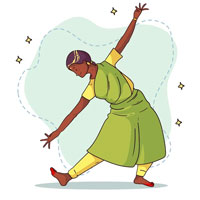
GRADED EXAMINATIONS – GRADE 2
The candidates will be assessed on basic and intermediary steps (“Adavus”) and more in-depth vocabulary.
The candidate will be examined on performance of the steps which are executed with proper techniques.
The candidate should be able to perform single handed gestures (“Asamyuktha hastas”), double handed movements (“Samyuktha hasta”), neck movements (“Greeva Bhedas”), eye movements (“dristi Bhedas”) and the rules of Dance( “Natya Kramaha”)
The recitation of the rhythm (“Solkattu”) with the hand patterns of each step will be assessed and includes int the assessment.
Please see the syllabus for more details.
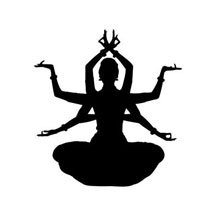
GRADED EXAMINATIONS – GRADE 3
The candidates will be assessed on all the basic/intermediary steps (“Adavus”) in this grade.
The candidate is expected to learn at least one dance item before appearing for this grade. The assessment is based on their performance of the completed dance item and theory covering the syllabus.
The candidate is required to carry out their course work and prepare a PowerPoint (or similar) presentation which includes any additional research they have done on the syllabus contents. Completed coursework presentation with teacher’s notes should be forwarded to the Board for evaluation. This would be beneficial to the candidate as the examiner would be able to assess the effort and knowledge in addition to their performance on the day. Your teacher/Academy would be able to assist you in getting more details on this.
Please see the syllabus for more details.
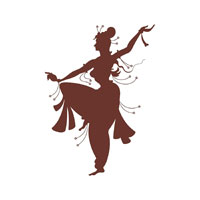
GRADED EXAMINATIONS – GRADE 4
Grade 4 examination covers intermediate/advanced topics with more practical skills.
The candidates should be able to perform three different dances which includes one item in technical dancing (steps with technical aspects) and other two items providing importance to expressions.
Candidates are expected to show the skills in rhythm for the dance item they perform.
The candidate is required to carry out their course work and prepare a PowerPoint (or similar) presentation which includes any additional research they have done on the syllabus contents. Completed coursework presentation with teacher’s notes should be forwarded to the Board for evaluation. This would be beneficial to the candidate as the examiner would be able to assess the effort and knowledge in addition to their performance on the day. Your teacher/Academy would be able to assist you in getting more details on this.
Please see the syllabus for more details.
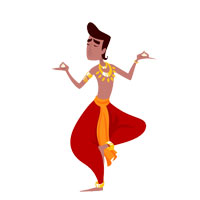
GRADED EXAMINATIONS – GRADE 5
Grade 5 examination covers assessments for more advanced topics including practical and theory.
The candidates should be able to perform three more different dances in addition to Grade 4. The candidate will be assessed on their understanding of the song of the dance, performance of the dance with expressions and acting skills.
Common dance items which are included in these assessments are “Patham”, “Keerthanam” and “Thillana”.
The candidate is required to carry out their course work and prepare a Powerpoint (or similar) presentation which includes any additional research they have done on the syllabus contents. Completed coursework presentation with teacher’s notes should be forwarded to the Board for evaluation. This would be beneficial to the candidate as the examiner would be able to assess the effort and knowledge in addition to their performance on the day. Your teacher/Academy would be able to assist you in getting more details on this.
Please see the syllabus for more details.
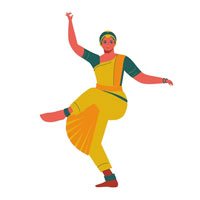
GRADED EXAMINATIONS – GRADE 6
Grade 6 examination will assess the skills of the candidates on more advanced dance items which composes of techniques, expression and acting.
Most common dance items focusing on this grade are “Varnam” and “Javali”. Candidates expected to carry out coursework and PowerPoint presentations as outlined in previous grades.
Please see the syllabus for more details.
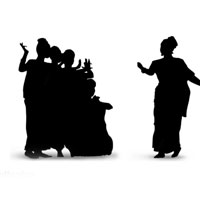
GRADED EXAMINATIONS – GRADE 7
Grade 7 examination covers assessments for more advanced topics including practical and theory.
Candidates should be able to perform further three more advanced level dance items which are final stages towards their completion of the course. This assessment includes theory and practical tests based on Grade 7 syllabus and will be judged on the technical ability and skills in performing these tasks.
Most common dance items focussing on this grade are “Mishra Alarippu”,“Slokam” and “Thodayamangalam”. Candidates expected to carry out coursework and PowerPoint presentation as outlined in previous grades.
Please see the syllabus for more details.
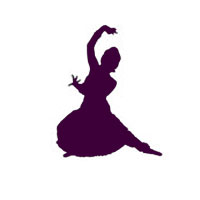
GRADED EXAMINATIONS – GRADE 8
Grade 8 examination is marked as milestone in student’s journey in Bharatanatyam which awards a diploma to the successful applicant.
In this examination, the candidate should be able to perform any dances from grade 3 to grade 7 and expected to be well familiar with techniques and expressions that need to be a complete dancer.
After successful completion of this grade, the student would be ready to perform the “Aragetram” (the first public performance as a complete dancer).
The course work should include knowledge of various folk dances and regional dance forms of India and differences between eastern/western classical dance styles. Your dance teacher/academy would be able to guide you on this.
Candidates expected to carry out coursework and PowerPoint presentations as outlined in previous grades.
Please see the syllabus for more details.
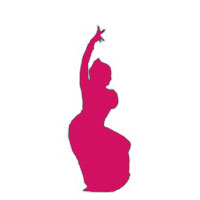
ADVANCED LEVEL 1 (GRADE 9)
This grade enables the candidates to continue their journey in Bharatanatyam and to introduce their skills to become a dance trainer.
The candidate should demonstrate knowledge and performing skills on various items outlined in the syllabus and in guidance from their teacher/academy.
Candidates expected to carry out coursework and PowerPoint presentations as outlined in previous grades.
Please see the syllabus for more details.

ADVACED LEVEL 2 - POST DIPLOMA (GRADE 10)
The advanced level 2 examination provides an opportunity to the candidates to achieve the highest qualification with EPAEB which awards a Post Diploma qualification to the successful candidates.
The assessment evaluates more complex items performed by candidates with expression, techniques and acting. Most common items subject to assessment are “Javali” and “Ashtapadi” and “Varnams”. Candidates can choose to perform “Pancharatna Keertanas” or “Keerthanams” where they can show more “Abhinaya” (acting) and knowledge in composing and performing a “Jati”.
Please see the syllabus for more details.

